Ash is a common byproduct of burning substances, including cannabis. It is often overlooked, but recent research suggests that the color of ash may significantly influence the quality of weed. Understanding the composition of ash and its potential impact on weed quality is crucial for both consumers and producers in the cannabis industry.
This article aims to explore the relationship between ash color and weed quality, focusing on the effects of ash color on potency, flavor, and consumer preferences.
Understanding the Composition of Ash
The composition of ash is influenced by the chemical reactions that occur during the combustion of weed. When weed is burned, it undergoes a process known as pyrolysis, where it breaks down into various compounds. These compounds then react with oxygen in the air to form ash.
The chemical reactions of ash formation are complex and depend on several factors, including the temperature at which the weed is burned, the oxygen levels in the environment, and the moisture content of the weed. Higher temperatures and lower oxygen levels can result in incomplete combustion, forming more carbon-rich ash. On the other hand, lower temperatures and higher oxygen levels can result in more complete combustion, forming ash that contains a higher proportion of inorganic compounds.
In addition to the chemical reactions, environmental factors also play a role in determining the color of ash. The mineral content of the soil in which the weed is grown can influence the composition of ash and its color. For example, weed grown in soil with a high calcium content may produce ash that is lighter in color, while weed grown in soil with a high iron content may produce darker ash.
Evaluating the Effects of Ash Color on Weed Quality
Imagine yourself evaluating how the color of ash affects the quality of weed. Ash color plays a significant role in the smoking experience and can provide valuable insights into the purity of the weed.
When observing the color of ash after smoking, lighter-colored ash generally indicates a higher-quality product. The impact of ash color on the smoking experience is primarily due to the combustion process. When the weed is burned, it undergoes chemical reactions that result in the formation of ash. Various factors, including the presence of impurities and the overall composition of the weed influence the color of the ash.
Lighter-colored ash, such as white or light gray, suggests that the weed is relatively pure and has undergone thorough curing and drying processes. On the other hand, darker-colored ash, such as black or dark gray, may indicate the presence of impurities or incomplete combustion. These impurities can negatively affect the taste, aroma, and overall smoking experience.
Furthermore, ash color is also significant in assessing weed purity. The color of ash can provide valuable information about the presence of contaminants or additives in the weed. Lighter-colored ash generally suggests a higher level of purity, while darker-colored ash may indicate the presence of residual chemicals or other substances.
The Role of Ash Color in Determining Potency
Picture yourself examining a bowl of burnt cannabis, and you notice that the color of the ash directly correlates with the potency of the weed. This observation is not just a coincidence, but rather a result of the relationship between ash color and the terpene profile of the cannabis.
Terpenes are organic compounds found in cannabis that contribute to its aroma and flavor. They also play a role in the overall effects of the plant, including its potency. When cannabis is burned, the terpenes are released into the smoke, and their presence can be detected in the color of the resulting ash.
A darker ash color indicates a higher concentration of terpenes in the cannabis. This is because the combustion process is less efficient, leading to a greater amount of terpenes being released. On the other hand, a lighter ash color suggests that the cannabis has a lower concentration of terpenes. This typically results from a more efficient combustion process, where fewer terpenes are released. Therefore, the color of the ash can provide valuable information about the potency of the weed, as it reflects the terpene profile and the overall quality of the cannabis.
The color of the ash also reflects the combustion efficiency of the cannabis. A darker ash color indicates that the cannabis has not burned completely, leaving behind more impurities and unburned plant material. This can result in harsher smoke and a less pleasant experience for the user. On the other hand, a lighter ash color suggests a more efficient combustion process, where the cannabis has burned more completely, leaving behind fewer impurities. This can lead to a smoother smoke and a more enjoyable experience. Therefore, the color of the ash is not only an indicator of potency but also of the overall quality of the cannabis and the combustion efficiency.
Exploring the Relationship Between Ash Color and Flavor
When cannabis is burned, the ash left behind can range in color from light gray to dark gray or even black. Several factors, including the presence of different compounds within the plant material influence this color variation.
One of the main factors that can influence the color of ash is the terpene profile of the cannabis. Terpenes are aromatic compounds found in cannabis that contribute to its unique flavor and aroma.
Different terpenes have different chemical properties, which can impact how the cannabis burns and the resulting color of the ash. For example, terpenes with higher boiling points may not fully combust during smoking, leading to darker ash. On the other hand, terpenes with lower boiling points may burn off more completely, resulting in lighter colored ash.
The color of ash can also impact the overall smoking experience. Lighter-colored ash is often associated with a smoother and more enjoyable smoking experience. Darker ash, on the other hand, can indicate a less desirable smoking experience, as it may suggest the presence of impurities or a less optimal combustion process.
While ash color alone is not a definitive indicator of weed quality, it can provide valuable information about the terpene profile and overall smoking experience. By paying attention to the color of the ash, cannabis enthusiasts can gain insights into the quality and flavor of their weed.
Does the Color of Ash on Weed Influence How Long it Stays Good?
The color of ash on weed does not influence how long does weed stay good. The quality of weed is not determined by the color of ash it produces. Instead, factors like storage conditions and strain type play a bigger role in how long does weed stay good.
Analyzing Consumer Preferences and Perception of Ash Color
Contrary to popular belief, consumer preferences and perception play a significant role in determining the quality of ash in weed. While ash color may seem like a trivial aspect of the smoking experience, it can actually have a profound impact on how consumers perceive the quality of the product.
Research has shown that consumers have varying preferences regarding the color of ash, with some preferring a light grey ash and others favoring a darker, more charcoal-like ash. Consumer preferences for ash color in different strains can be influenced by a variety of factors, including personal experiences and cultural influences.
For example, some consumers may associate a light grey ash with higher quality weed, as it is often seen as a sign of a cleaner burn. On the other hand, others may prefer a darker ash, believing that it indicates a more potent strain. Cultural norms and trends within the cannabis community can also influence these preferences.
In addition to consumer preferences, the impact of ash color on the overall smoking experience should not be overlooked. While the scientific evidence on this topic is limited, some studies suggest that the ash’s color can affect the smoke’s flavor and smoothness. For instance, a study published in the Journal of Analytical Toxicology found that ash with higher levels of carbon and mineral content can lead to a harsher smoke and a less enjoyable smoking experience. However, more research is needed to fully understand the relationship between ash color and the overall smoking experience.
Frequently Asked Questions
How does the composition of ash differ for different strains of weed?
The ash composition can vary among different weed strains, potentially impacting the flavors experienced. Furthermore, there may be a correlation between the color of ash and the potency of various cannabis strains.
Can the ash’s color indicate the strain’s overall quality?
The ash color is not a reliable indicator of a strain’s overall quality. Ash color is influenced by the combustion temperature and the cannabinoid content, but other factors such as cultivation techniques and genetics also play a significant role.
Does the ash color impact the high or effects experienced by the consumer?
The color of ash can vary based on the method of consumption. Still, there is no scientific evidence to suggest a correlation between ash color and the potency of the strain or the effects experienced by the consumer.
Are there any specific terpenes or compounds found in the ash that contribute to its color and influence on weed quality?
The relationship between ash color and the presence of specific terpenes is not well-established. However, ash color can potentially influence the flavor profile of weed by indicating the combustion efficiency and presence of impurities.
Are there any techniques or methods to enhance or alter the color of ash during the smoking process?
The color of ash during smoking can be influenced by combustion temperature. Higher temperatures tend to produce whiter ash, while lower temperatures result in darker ash. However, there are currently no known techniques to alter the color of ash intentionally.

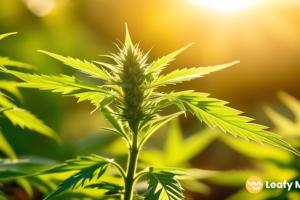
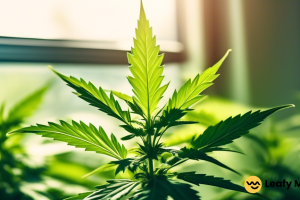





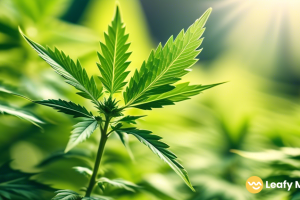
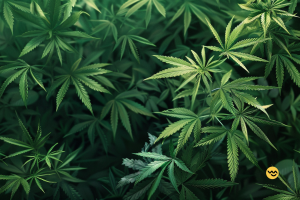
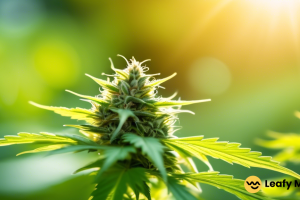
Leave a Reply